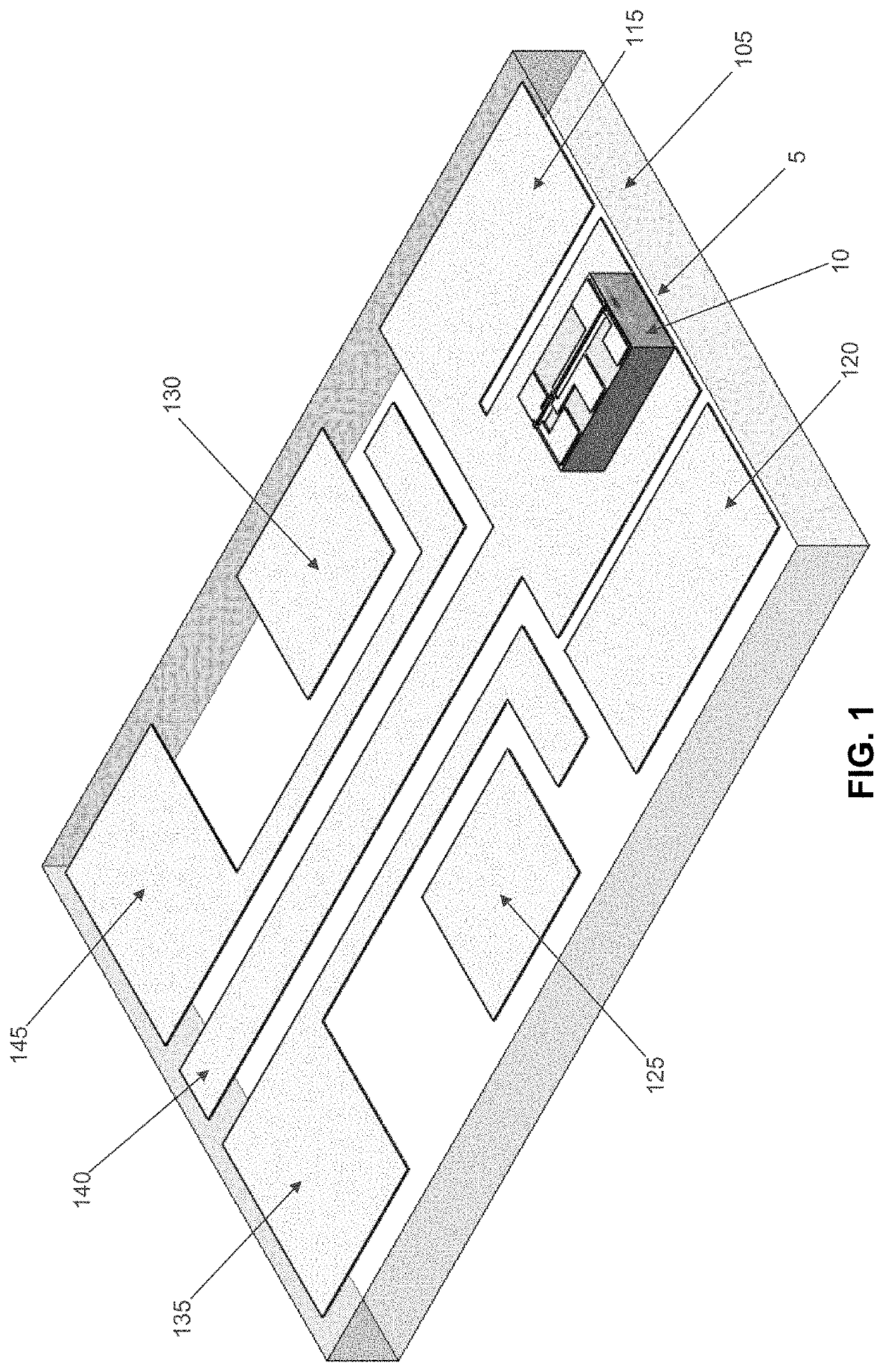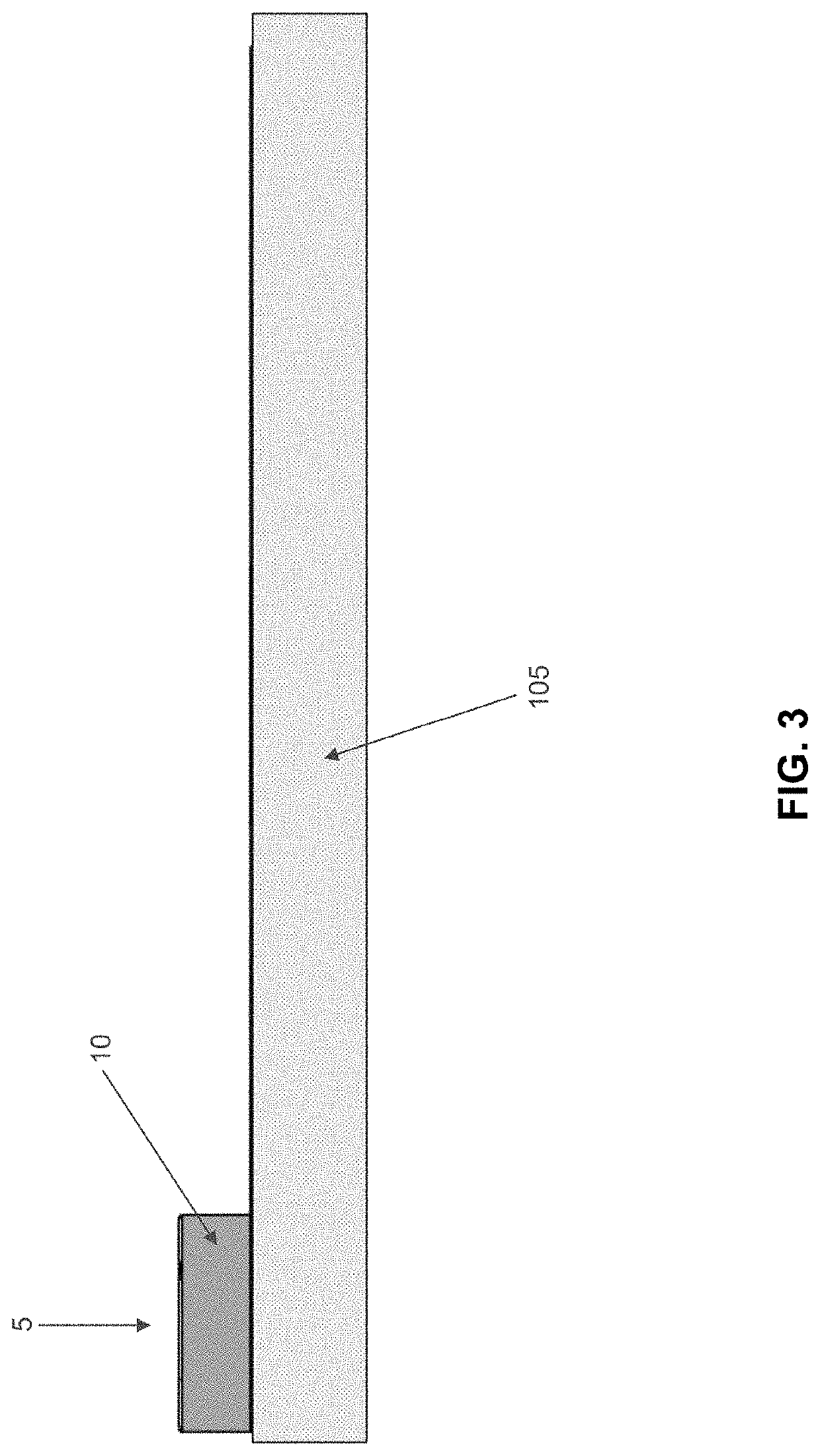Widely tunable, single mode emission semiconductor laser
- Summary
- Abstract
- Description
- Claims
- Application Information
AI Technical Summary
Benefits of technology
Problems solved by technology
Method used
Image
Examples
Embodiment Construction
[0054]In one preferred form of the invention, and looking now at FIGS. 1-10, there is provided a widely tunable, single mode emission semiconductor laser 5 which comprises a semiconductor substrate 10 with an epitaxy that allows for semiconductor laser operation, e.g., as a laser diode or as a cascade laser. By way of example but not limitation, semiconductor substrate 10 may comprise a III / V semiconductor material such as gallium nitride (GaN), gallium arsenide (GaAs), indium phosphide (InP) or gallium antimonide (GaSb), depending on the target wavelength range of the laser. The epitaxy generally comprises a layer structure that contains an active zone with one or more quantum films, upper and lower cladding, and upper and lower waveguide layers. More particularly, the widely tunable, single mode emission semiconductor laser 5 has a cuboid shape with the bottom formed by semiconductor substrate 10 and the top formed by an upper waveguide layer which is structured so as to provide t...
PUM
 Login to View More
Login to View More Abstract
Description
Claims
Application Information
 Login to View More
Login to View More - R&D
- Intellectual Property
- Life Sciences
- Materials
- Tech Scout
- Unparalleled Data Quality
- Higher Quality Content
- 60% Fewer Hallucinations
Browse by: Latest US Patents, China's latest patents, Technical Efficacy Thesaurus, Application Domain, Technology Topic, Popular Technical Reports.
© 2025 PatSnap. All rights reserved.Legal|Privacy policy|Modern Slavery Act Transparency Statement|Sitemap|About US| Contact US: help@patsnap.com



